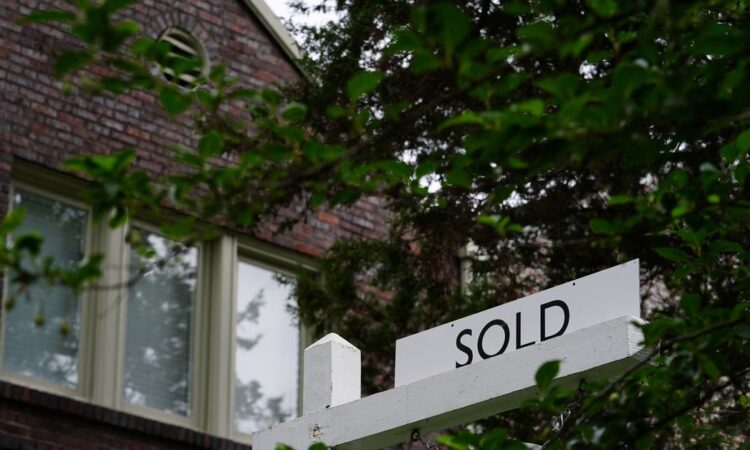
WASHINGTON, Sept 19 (Reuters) – U.S. homebuilding plunged to a more than three-year low in August as a resurgence in mortgage rates weighed on demand for housing, but a jump in permits suggested new construction remained supported by a dearth of homes on the market.
The decline in housing starts reported by the Commerce Department on Tuesday was the largest in a year and occurred across the board. The report followed on the heels of news on Monday that homebuilders’ confidence slumped to a five-month low in September, with more builders reporting they were cutting prices and offering other incentives to lure buyers.
Home building, together with new home sales, have been the bright spots for the housing market, the sector hardest hit by the Federal Reserve’s aggressive monetary policy tightening. The U.S. central bank is expected to leave interest rates unchanged on Wednesday, having raised its policy rate by 525 basis points since March 2022 to the current 5.25%-5.50% range.
“August’s home construction data appear to be showing some cracks in the armor of what has been one of the few strong indicators in the housing market recently,” said Daniel Vielhaber, an economist at Nationwide in Columbus, Ohio. “Still, it’s important to note that there could be a noise component here as much of the sharp decline in starts came from the multifamily sector, which is notoriously volatile.”
Housing starts tumbled 11.3% to a seasonally adjusted annual rate of 1.283 million units last month, the lowest level since June 2020. Data for July was revised lower to show starts accelerating to a rate of 1.447 million units instead of the previously reported 1.452 million units.
Economists polled by Reuters had forecast starts would slip to a rate of 1.440 million units.
Single-family housing starts, which account for the bulk of homebuilding, dropped 4.3% to a rate of 941,000 units last month. Single-family homebuilding dropped in the Northeast and Midwest and slumped 26.9% in the West, which was blamed on Hurricane Hilary. It rose in the densely populated South.
Demand for new construction has been boosted by an acute shortage of previously owned homes on the market, with homebuilding rising for much of this year and breathing life into the housing market. But a recent surge in mortgage rates, in tandem with higher U.S. Treasury yields, is pushing buyers to the sidelines. The average rate on the popular 30-year fixed mortgage is hovering around 7.18%, the highest since March 2002, according to data from mortgage finance agency Freddie Mac.
Sentiment among homebuilders is also taking a hit. A survey on Monday showed the National Association of Home Builders/Wells Fargo Housing Market Index dropped below the break-even mark of 50 in September for the first time in five months.
Stocks on Wall Street were trading lower. The dollar fell against a basket of currencies. U.S. Treasury yields rose as higher commodity prices, including oil, fanned concerns that the recent progress in slowing inflation could be undone.
REBOUND EXPECTED
Starts for housing projects with five units or more plunged 26.3% to a rate of 334,000 units in August, the lowest level since August 2020. Multi-family housing construction appears to have peaked in April 2022, when it was fueled by demand for rental accommodation as higher mortgage rates priced out potential home buyers.
Tighter financial conditions, which are limiting credit access for builders, as well as a huge stock of multi-family housing under construction are slowing activity.
Permits for future homebuilding jumped 6.9% to a rate of 1.543 million units, the highest since October 2022. They were boosted by a 14.8% surge in multi-family housing permits to a rate of 535,000 units. Single-family housing permits rose 2.0% to a rate of 949,000 units, the highest since May 2022.
Residential investment has contracted for nine straight quarters, the longest such stretch since the housing bubble burst, triggering the 2008 global financial crisis and the Great Recession.
August’s slump in homebuilding prompted economists at Goldman Sachs to lower their gross domestic product growth estimate for the third quarter by one-tenth of a percentage point to a 3.2% annualized rate. The economy grew at a 2.1% pace in the second quarter.
“The decline in starts in August overstates the weakness in housing construction and we look for some reversal of the decline in September,” said Nancy Vanden Houten, lead U.S. economist at Oxford Economics in New York.
The number of houses approved for construction that are yet to be started rebounded 5.6% to 282,000 units. The single-family homebuilding backlog increased 2.9% to 142,00 units, while the completions rate for this segment dropped 6.6% to 961,000 units, the lowest level since January 2022.
The stock of housing under construction fell 0.2% to a rate of 1.688 million units. The inventory of single-family housing under construction dipped 0.1% to a rate of 676,000 units, the lowest level since May 2021.
The stock of multi-family housing under construction eased 0.2% to 995,000 units, still at record highs, suggesting limited scope for further increases in multi-family housing construction despite the rise in building permits for this segment.
Realtors estimate that housing starts and completion rates need to be in a range of 1.5 million to 1.6 million units per month to bridge the inventory gap.
“The undersupply of single-family homes on the market could provide growth opportunities for home builders, especially the companies building entry-level homes for the large cohort of millennials looking to buy,” said Jeffrey Roach, chief economist at LPL Financial in Charlotte, North Carolina.
Reporting by Lucia Mutikani; Editing by Chizu Nomiyama, Paul Simao and Andrea Ricci
Our Standards: The Thomson Reuters Trust Principles.




